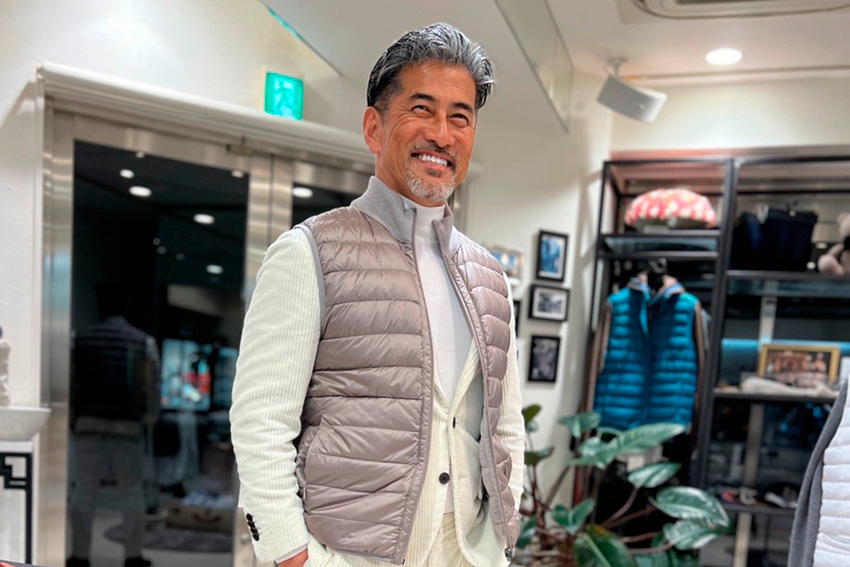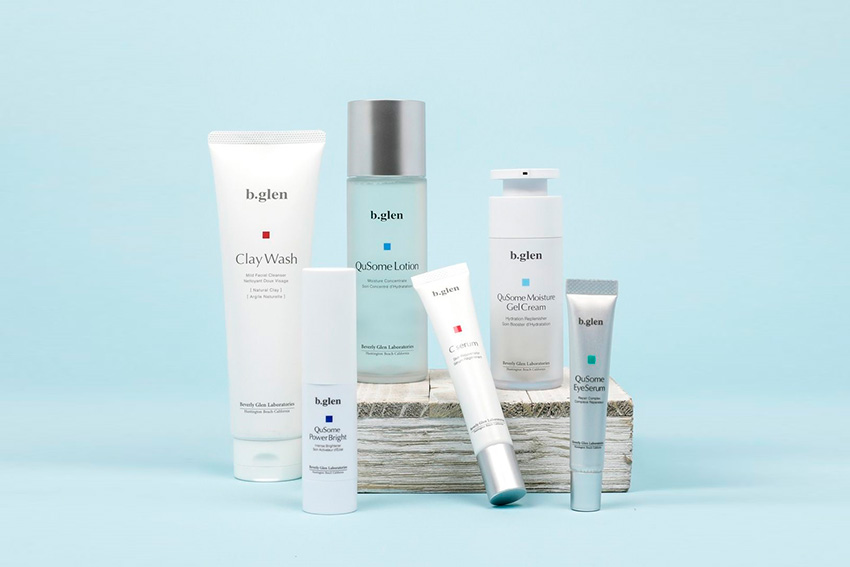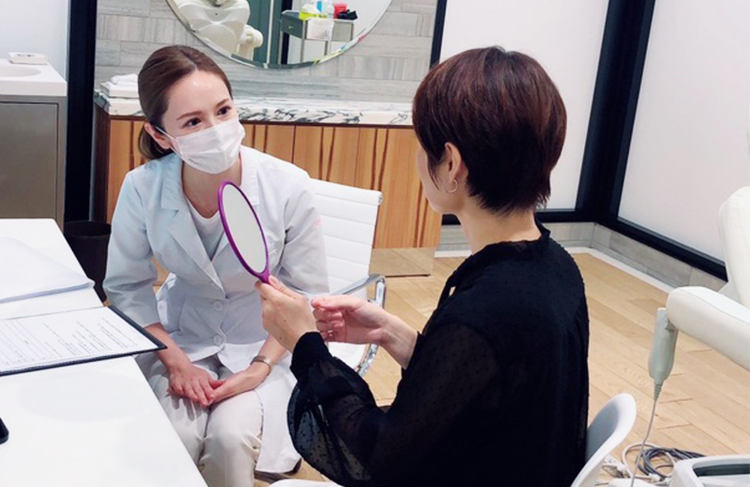In an exclusive interview with The Worldfolio, Akira Kodama, President of Beverly Glen Laboratories, shares the transformative journey of his company in the global beauty landscape. Kodama's entrepreneurial odyssey, from starting in California to pivoting towards the nuanced skincare needs of Japanese women, is highlighted. The interview explores the revolutionary QuSome® technology, overcoming skin barriers, and collaborations with clinics. As Beverly Glen Laboratories expands its footprint from the United States to Asia, Kodama discusses strategic growth plans and emphasizes the dynamic intersection of biotechnology and consumer needs. The interview concludes with Kodama's vision for the future, rooted in an unwavering commitment to understanding and addressing evolving skincare concerns.

Could you begin by clarifying the identity of your company in the global beauty landscape, particularly in relation to common categorizations like J-Beauty? We're also interested in hearing about your personal journey in founding the company in California, the challenges you encountered, and how your unique experiences shaped your approach to skincare.
First of all, I would not consider our company as a Japanese or J-Beauty company. I founded my company in Huntington Beach, California, 20 years ago. At the very beginning, I had no idea about skincare and cosmetics because my first career after graduating from college was working as a sales representative. I had basic skills in how to sell things to people, and although I tried other businesses, I think my true calling was in skincare.
My first target was American women, and to reiterate, I did not understand skincare at all. I was shown a single bottle of high-concentration vitamin C, and at that time I did not understand what I was looking at. I did not understand that vitamin C helps peoples’ skin, but slowly over time, I was taught the A-Zs of skincare and cosmetics. American consumers were tough to sell to, however, I changed the direction to focus on the Japanese market, and I felt that I understood Japanese people much more than I understood Americans. I had been living in the US for a few years at that point, but I was no closer to understanding Americans than I was when I first arrived.
I think a big reason comes down to how diverse America is as a country. There is no one type of American, there are so many different types of people, which subsequently means there are so many different types of skin. It is difficult to focus on one skin concern, but this is not necessarily the case for Japanese women. There are four to five patterns for skin concerns among women from Japan. I felt that the Japanese market was much easier to handle, so my focus was shifted full-time to Japan.
The switch happened around 17 years ago now, and I remember vividly that the summer season that year was extremely hot. My son was seven years old at the time, and all of a sudden he started having seizures. After he came back from a baseball game, he froze in the car, and throughout the summer we had to go back and forth to the hospital. For almost 60 days we went back and forth, and it meant that I did not have a chance to come back to Tokyo for business. This was again another turning point for the business.
At the beginning of my skincare career, I found a couple of exclusive importers in Japan, and those companies were distributing and making a couple of different brands. To take care of my son I needed to stay in California, so I thought about business styles that allowed me to stay with my son while doing business in Japan. This was around the year 2005, so e-commerce was only just starting to pick up traction. Not many companies have tried e-commerce, but I saw this as my only choice to stay with my son and still do business in Japan. I learned how to sell things online.
In 2005, smartphones did not exist yet and the release of the first iPhone was still two years away. People who bought products online used a PC to purchase those products. I learned how to make a webpage and how to make a digital shopping cart. I had no choice and had to learn all of this by myself. I was fortunate that shortly after 2005 e-commerce exploded in popularity. My business in California was growing rapidly, so fast that I had not registered it in Tokyo yet but I had already made USD 10 million in sales revenue. I decided that it was time to start a company in Tokyo around four or five years later.
I was a sales representative originally, so I knew how to sell photocopying machines or fax machines, but I had no idea how to sell skincare to women. I learned about women’s skincare through Japanese social media and it functioned similarly to how Reddit functions today where people can run small community-like forums. Many young women registered for my community, and they asked me as many questions as they could.
My eureka moment was when I finally learned that makeup and skincare are two different things. This was something I honestly did not know at the beginning. I saw that in particular, Japanese women were concerned with aging spots as well as wrinkles and adult acne. I felt I could make a solution that addressed each of these concerns. I was not trying to sell lotions, serums, or creams, instead, I was trying to offer solutions, and this is why we do not have a signature product. This basic business practice is something that we continue to this day, and we always try to make the best solution for each customer.
You said that you sell solutions, not a standout product, but you could argue that a standout material or ingredient used in your products is QuSome®, a unique drug delivery system developed by Dr. Brian Keller. How does the QuSome® overcome the skin’s natural barrier functionalities to penetrate deep into the skin?
Liposomes are delivery vehicles for transporting substances into the body effectively via facilitating absorption. Dr. Brian Keller was a specialist for liposomes originally so he attempted to learn everything he could about liposomes. These liposomes however have one big issue, and that is that they are easy to break.
If we break down liposomes a bit further, they are nano-sized capsules that are made of lipids, meaning that they are very close to the skin. The ingredients are water soluble and therefore easy to break. Ingredients are therefore put inside tiny capsules. When the products are delivered to the customer the capsule tends to be broken too. Another problem was the cost of manufacture, which was expensive. The third problem that I saw was the process of making liposomes. We have to use a solvent, which is not safe for human skin. Dr. Keller was studying how to do more safe and easy capsule technology. As a result of this study, he developed QuSome®, so theoretically QuSome® and liposomes are very similar, but the material is very different.
We use a patented material to make QuSome®. As you know, human skin has a barrier that includes water and lipids as well as dead skin. With QuSome® we try to penetrate this wall with ingredients such as hyaluronic acid or vitamin C, but all ingredients that are water soluble are not able to penetrate because of the lipid oil barrier. Even oil-soluble ingredients cannot easily penetrate the barrier such as vitamin A and vitamin E. This is where the patented material comes in because capsules made using this special material are very close to skin lipids, and as such can easily penetrate the cells in the deep layer of skin. QuSome® can also control the depths of the skin or the penetration level. For example, for the treatment of wrinkles, the ingredient needs to be delivered very deep. Controlling this depth is a huge advantage and the unique selling proposition (USP) of QuSome®.
Although we do have a couple of original ingredients of our own, basically our ingredients are the same as competitors and are commonplace in the industry. The only difference is the delivery technology, and although this difference seems simple, it is a game changer.

QuSome® products
You talked about how you initially started in America catering to American consumers but then you pivoted back to Japan. Japanese or more generally, Asian skin, is very different from the skin of Europeans and Americans. It ages slower due to a thick dermis, however, due to a thinner stratum cornea, it scars more easily and is a lot more sensitive as a result. How do you ensure that your products can suit varying types of skin?
Many Japanese women believe that their skin is sensitive. Dr. Brian Keller developed one more ingredient, and interestingly QuSome® itself has an anti-inflammatory function. The ingredient that Dr. Brian Keller invented has great functions for skin care, especially in terms of its ability to promote the development of skin around the cornea. Secondly, it incentivizes the vitamin C and vitamin A intake to the skin cells as well as developing skin lipids to naturally moisturize skin. QuSome® itself is a great ingredient regardless of skin type and maintains healthy skin.
In addition to QuSome®, you also talked about how Dr. Brian Keller developed other ingredients, but we also know that your firm is working with clinics and dermatologists. Could you go into more detail about some of your collaborative efforts and how they are doing so far?
There is a difference between the skincare product business and the medical skin care business and fortunately, I understood the difference. We are now able to combine the good points of cosmetics products as well as medical skincare products. This clinic is still in the early stages, so we have not seen a huge amount of success just yet, but we are very positive about the progress made thus far.

Inside a B.Glen skin clinic
Is this just for your business or are you looking to provide your services to other private clinics through OEM?
I am thinking about that too and I think this might be the next step. The first step is to develop my skin clinic, and we have developed a unique method using QuSome® technology.
Beverly Glen Laboratories has a variety of different brands aside from your namesake. In addition, you are developing a line of beauty salons and skin clinics. What branding strategies are you employing to ensure their successful growth?
The result is everything, and that is because we are a solution provider and we have no proof of our worth without results. To achieve better results we have to continue to learn and study, and it is the reason behind the development of our skincare application. Right now a core aspect is that we are reconsidering the process of skincare routines.
In addition to your presence in the United States, you have your Japan office as well as offices in Hong Kong, China, and Singapore. Moving forward, which countries or regions do you believe has the most growth potential?
I still believe that I have a chance in other Asian countries, including ASEAN nations like Thailand, Malaysia, and Indonesia. Despite this, right now my focus is on the Japanese market.
The US market as a sales market is difficult, but American biotechnology and scientific technology are very advanced. Most of my ideas and inspirations are coming from what is happening in the US. We can then bring that to Japan, that is why the US is still very important. Through Dr. Keller, we have very strong connections with scientists in the US so that is a key element of our business.
Imagine that we came back in 2029 and had this interview all over again. What goals or dreams do you hope to achieve by the time we come back for that new interview?
I am always seeking to find the latest concerns of people. The world is changing rapidly, and that means that lifestyles change rapidly too. I am always chasing women’s skincare concerns. Finding the issues is more difficult than providing the solutions, so I always strive to sense the challenges of each era and continue to provide solutions that address them.
For more details, explore their website at https://www.bglen.com/
Interview conducted by Karune Walker & Paul Mannion
0 COMMENTS